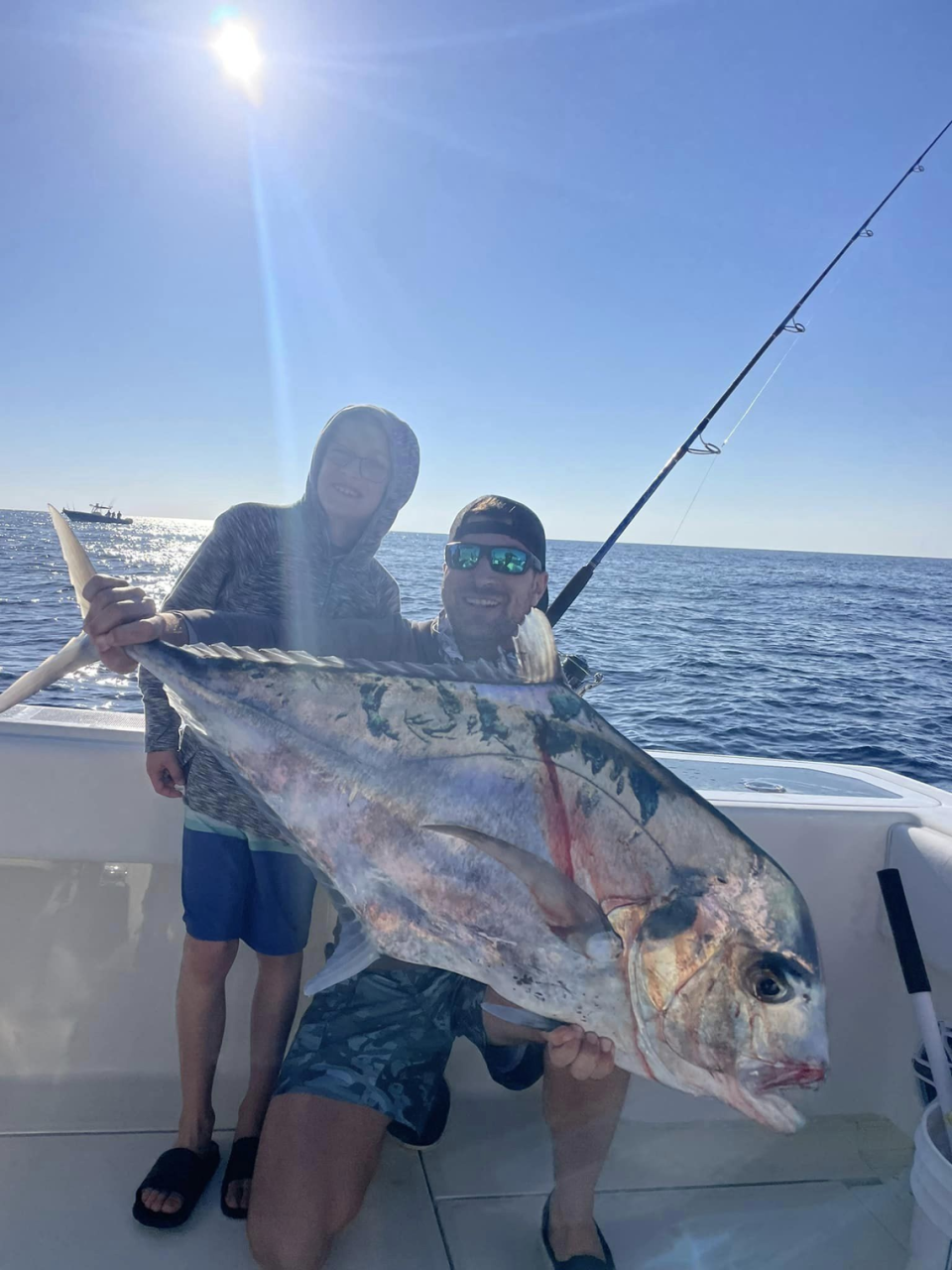How a Florida angler is finding the once-rare African Pompano in the Gulf of Mexico
Over nice stretches of weather during the winter months, captain Pablo Koch-Schick was able to experience some of the best fishing of his lifetime for one of the Gulf’s most unique and best-tasting fish.
“I saw this happen before in 2017,” the offshore captain Koch-Schick explained. “I don’t think there are normally this many around. They seem to congregate in different parts of the Gulf and it could be that they are spawning in this area right now, I’m not sure exactly.”
The species Koch-Schick has been able to get for his anglers is African Pompano. They like big structures at the bottom of the Gulf of Mexico. In the fall, it looked like anglers were catching quite a few. Over the past two months, those catches have increased and what used to be a rare by-catch is, right now, one of the highlights of every trip.
“It’s multiple places in 100 to 185 feet. They like that super-aggressive structure like springs and wrecks. They seem to hang out a lot with the amberjack and right now the amberjack have been shallower,” said Koch-Schick.
“We’re catching more APs (African Pomano) than AJs (amberjack) right now. I try to keep and chum up the AJs to the surface then fish below them for the APs. I use a long 30-pound leader and jig heads on spinning rods, almost like snapper fishing. I like pinfish, but they’ll eat dead bait or vertical jigs as well.”
Known for its excellent table fare, African Pompano can be eaten as sushi or cooked in many ways. With a minimum size limit of 24 inches, most fish offshore are between 15 and 50 pounds. Smaller ones are occasionally caught in shallower water within sight of land.
And while most of the big structures offshore have taxmen in the form of sharks, barracuda and goliath grouper looking to steal your catch, Koch-Schick said that, for some reason, African Pompano usually don’t get bitten in half or eaten like most grouper and snapper would.
“It seems they go more for mangroves and yellowtail, and stay away from the APs. We’ve had some times of three or four fish on and if one gets cut off we can focus on the other fish easier since they get left alone. It’s been amazing this year and not hit or miss. It’s been a consistent thing, but a lot of people don’t do it.”
After the two-per-boat limit is hit by his anglers, Koch-Schick has been going off in search of more common species like red grouper and snapper, both of which he said have been good. For fun, he’s been able to catch and release goliath grouper on the same structure the African Pompano have been holding on.
“I think it will stay good until the water gets too warm. When it gets above 80 degrees we’ll probably see them less. And I don’t mind the wind and cold we have right now. It’s needed to break up the red tide and the colder temperatures will keep the APs around longer.”
Captain Pablo Koch-Schick can be reached through his website reelcoquinafishing.com.


